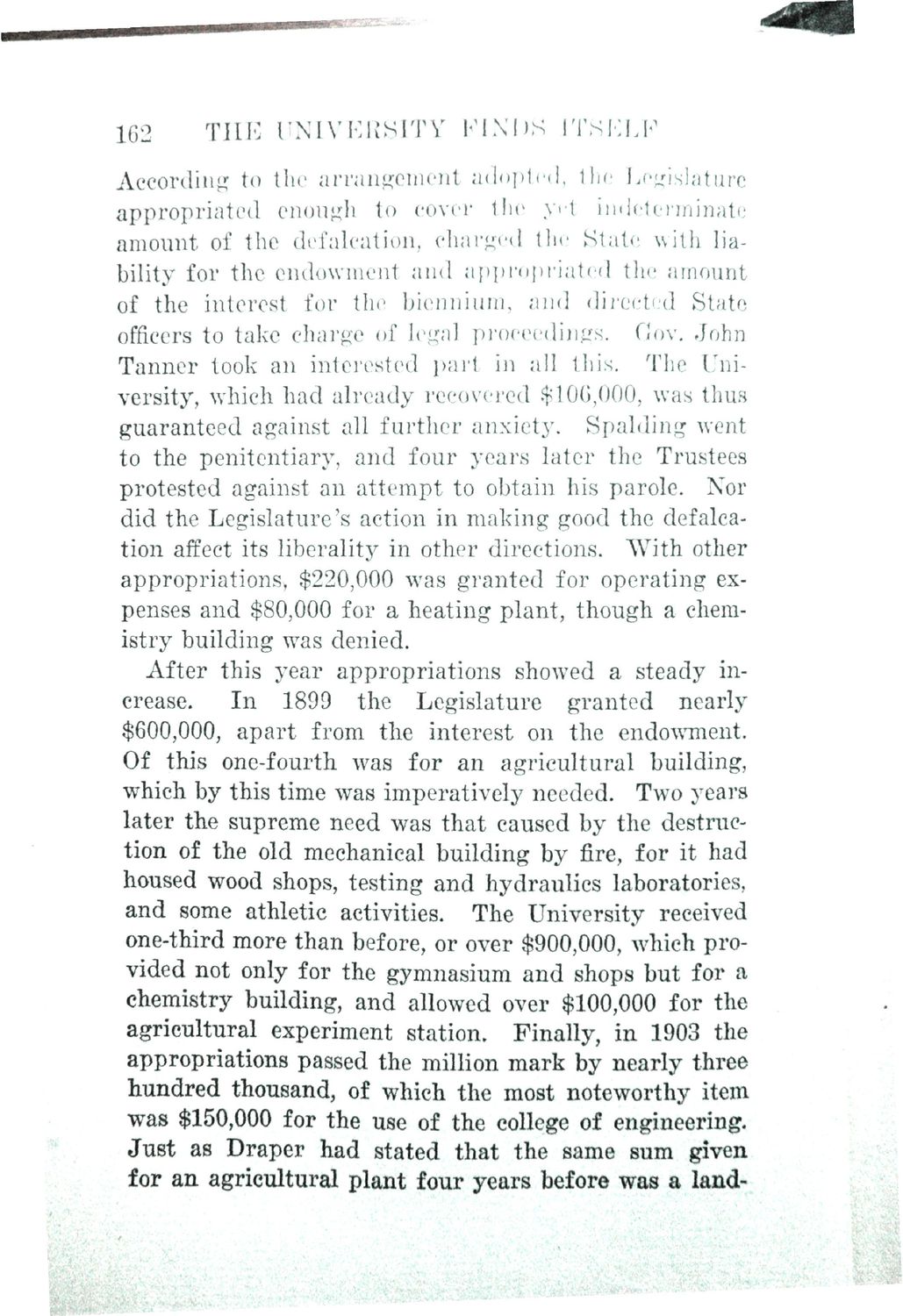| |
| |
Caption: Book - History of the University (Nevins)
This is a reduced-resolution page image for fast online browsing.

EXTRACTED TEXT FROM PAGE:
162 THE UNIVERSITY FINDS ITSELF According to the arrangement adopted, the Legislature appropriated enough to cover the yet indeterminate amount of the defalcation, charged the State with liability for the endowment and appropriated the amount of the interest for the biennium, and directed State officers to take charge of legal proceedings. Gov. John Tanner took an interested part in all this. The University, which had already recovered $106,000, was thus guaranteed against all further anxiety. Spalding went to the penitentiary, and four years later the Trustees protested against an attempt to obtain his parole. Nor did the Legislature's action in making good the defalcation affect its liberality in other directions. With other appropriations) $220,000 was granted for operating expenses and $80,000 for a heating plant, though a chemistry building was denied. After this year appropriations showed a steady increase. In 1899 the Legislature granted nearly $600,000, apart from the interest on the endowment. Of this one-fourth was for an agricultural building, which by this time was imperatively needed. Two years later the supreme need was that caused by the destruction of the old mechanical building by fire, for it had housed wood shops, testing and hydraulics laboratories, and some athletic activities. The University received one-third more than before, or over $900,000, which provided not only for the gymnasium and shops but for a chemistry building, and allowed over $100,000 for the agricultural experiment station. Finally, in 1903 the appropriations passed the million mark by nearly three hundred thousand, of which the most noteworthy item was $150,000 for the use of the college of engineering. Just as Draper had stated that the same sum given for an agricultural plant four years before was a land-
| |